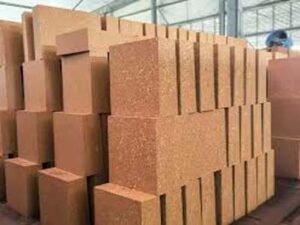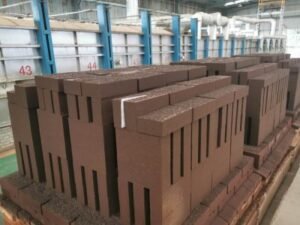Refractory materials, as the name implies, are a kind of refractory materials. Strictly speaking, the application of refractory materials is very extensive, especially in the field of industrial production. At present, many industrial productions require high-temperature technology as support, which is what we commonly call high-temperature kiln sintering. However, with the popularization and market recognition of refractory materials in recent years, refractory materials have been involved in many fields related to our production and life, such as life, medicine, people’s livelihood, etc.

According to the application in different fields, refractory products can also be subdivided into many categories, such as refractory temperature, acid and alkali combustion environment, high corrosion environment application, high erosion environment application, etc. The refractory materials required for these application scenarios are closely related to their properties. Do you know what these properties represent?
1. What is the heat capacity of refractory materials?
Simply put, heat capacity is an indicator of the heat absorption capacity of a substance. Specifically, the heat required to heat 1kg of a substance under normal pressure to raise its temperature by 1°C is called the heat capacity of the substance, also known as specific heat capacity.
For refractory materials, specific heat capacity is a crucial property. During use, specific heat capacity will directly affect the baking, heating and cooling process of refractory materials. This is because, for refractories with larger specific heat capacity, the heating rate will be relatively slow when absorbing the same amount of heat, so the baking time will be relatively longer. This characteristic makes specific heat capacity one of the important factors we need to consider when selecting and using refractory materials. Understanding and mastering the specific heat capacity of refractory materials can help us better control the baking process, improve production efficiency, and ensure the use effect of refractory materials.
2. What is the refractoriness of refractories?
In short, refractoriness is an important indicator to measure the performance of refractory materials in resisting high temperature without melting. Unlike general metal materials, refractory materials do not have a fixed melting point. Therefore, what we call refractoriness actually refers to the temperature when the refractory material softens to a certain degree at high temperature.
For refractories, refractoriness is like a lighthouse, guiding us to choose and use suitable materials in high temperature environments. In order to ensure that refractory materials can play a stable and lasting role in practical applications, their refractoriness must be higher than their maximum use temperature, so as to ensure that the material will not melt or soften excessively at high temperatures, thereby losing its proper function.
So, how to test the refractoriness of refractories? This is actually a relatively complex but very precise process. Usually, we will make the refractory materials to be tested into cone specimens according to the specified shape and size, and then put them into a high-temperature furnace together with the standard specimens for heating.
During the heating process, the cone specimen will gradually soften under the action of high temperature and eventually bend down. When it bends down until the tip of the cone just touches the bottom plate, the temperature at this time is recorded as the refractoriness of the refractory material.
Through this test method, we can accurately understand the performance of refractory materials at high temperatures, thereby providing a strong basis for their selection and use in practical applications.
3. What is the load softening temperature of refractories?
Load softening temperature, also known as load softening point, is actually an important indicator to measure the load-bearing capacity of refractory materials at high temperatures. We all know that refractory products usually have high compressive strength at room temperature and can withstand various pressures without deformation.
However, when they are in a high temperature environment and bear loads, the situation will be different. High temperature will cause the structure of the material to change, causing it to gradually lose its original strength and eventually deform.
So, how is the load softening temperature specifically defined? Simply put, it refers to the temperature at which the refractories begins to deform under the condition of constant load at high temperature. This temperature point is very important for the use of refractory materials because it is directly related to the stability and durability of the material in a high temperature environment.
If the load softening temperature is too low, the material will easily deform and break at high temperatures, and its normal use effect cannot be guaranteed. Therefore, when selecting and using refractories, we must fully consider the performance indicator of its load softening temperature.
4. What is the thermal shock stability of refractories?
Thermal shock stability, in simple terms, is the ability of refractories to not crack or be damaged when the temperature changes sharply, and the ability to resist fragmentation or rupture in actual use.
We all know that refractories often need to work in high-temperature environments, and the temperature changes are often very drastic. If the material cannot withstand such drastic temperature changes, it will easily crack, damage, or even break.
In order to measure the thermal shock stability of refractories, we usually use the number of rapid cooling and heating to express it. That is, expose the material to a rapidly changing temperature environment to see how many times it can withstand such temperature changes without being damaged. This indicator is also called resistance to rapid cooling and heating, which intuitively reflects the durability and stability of refractory materials under temperature changes.
If your kiln is often shut down, then thermal shock stability is a very important consideration when selecting and using refractories. Because only materials that can remain stable under drastic temperature changes can ensure long-term use effects and safety in high temperature environments.
So, if you are looking for high-quality refractories, then you must pay attention to its thermal shock stability!

